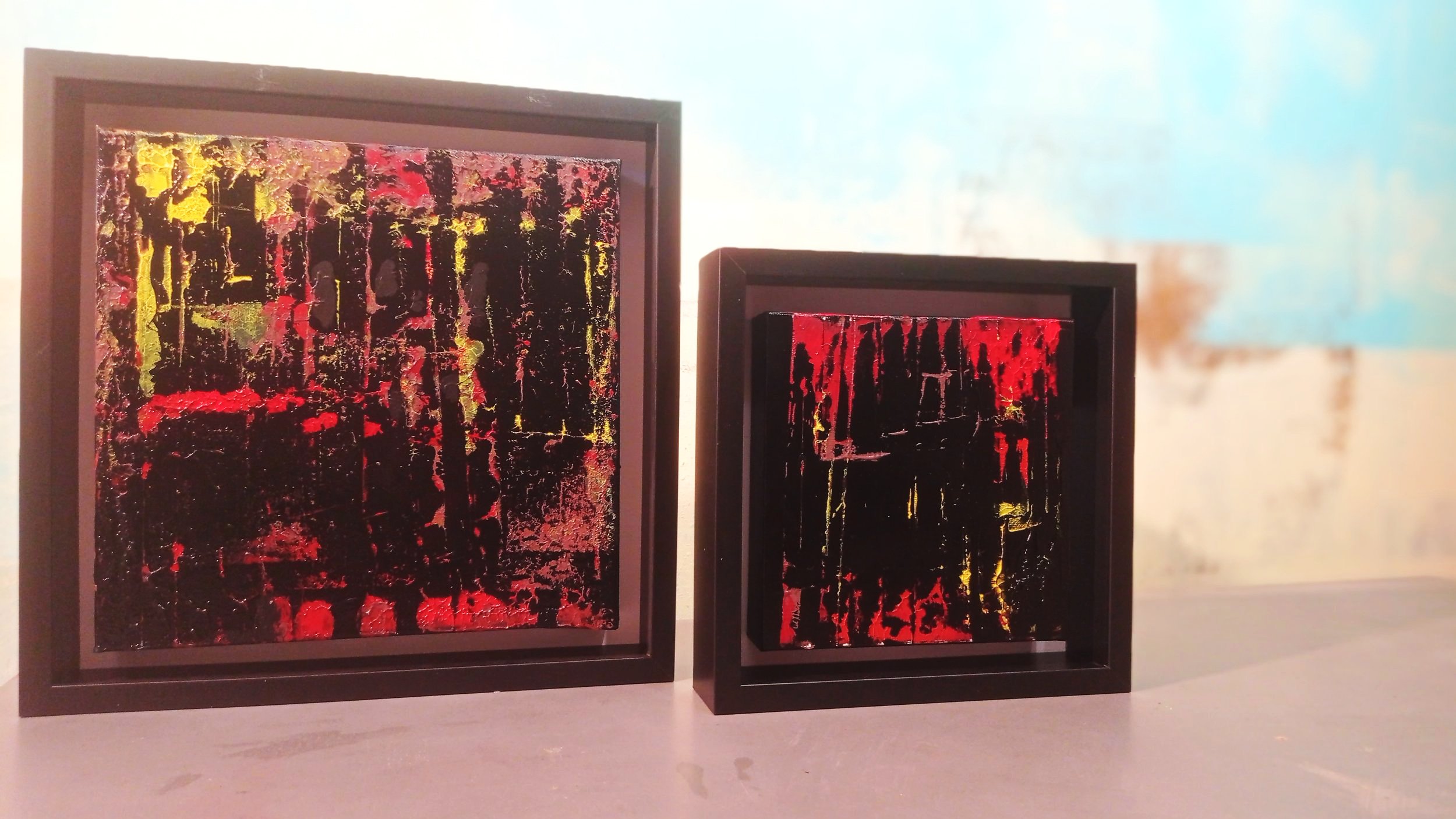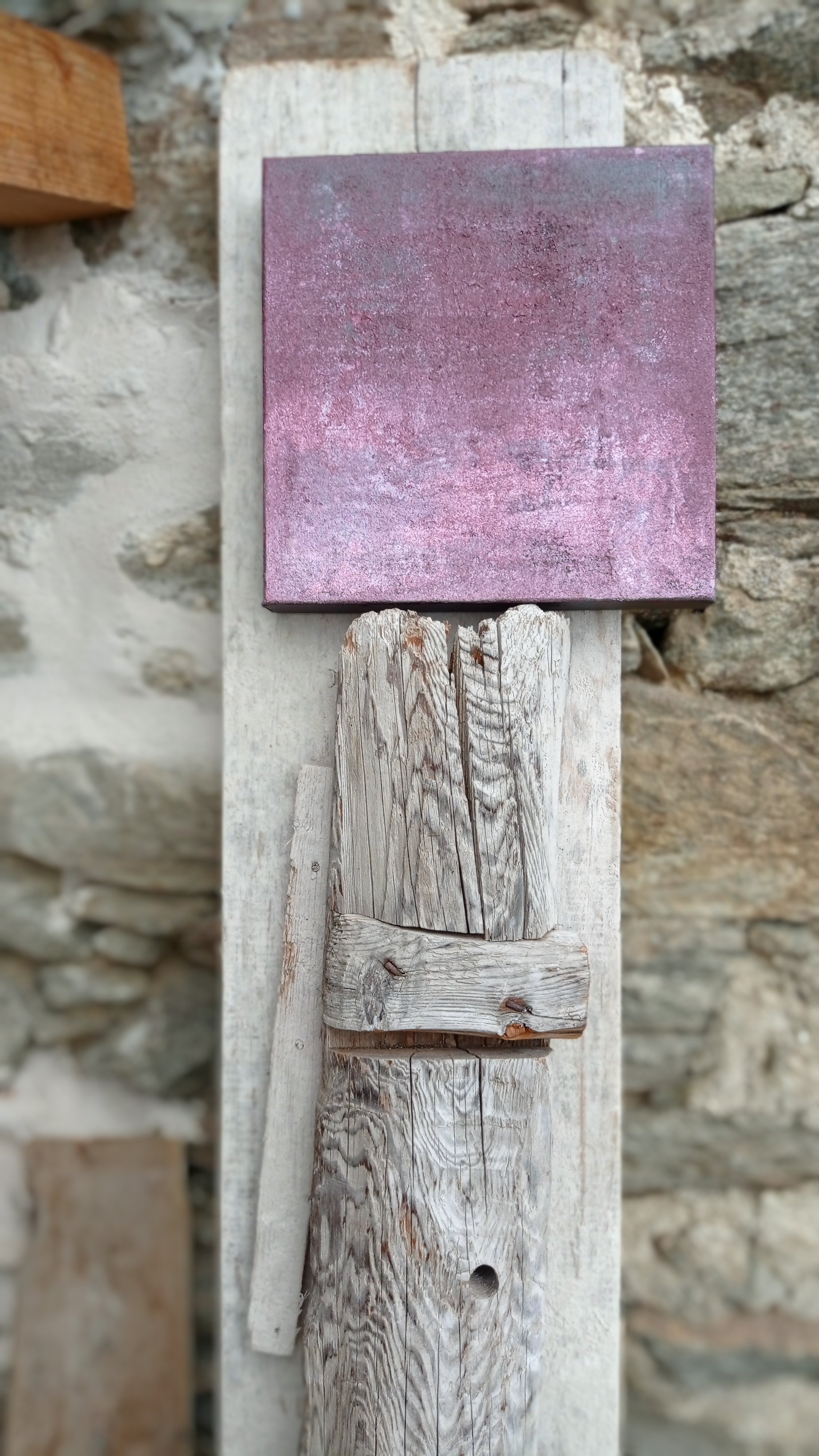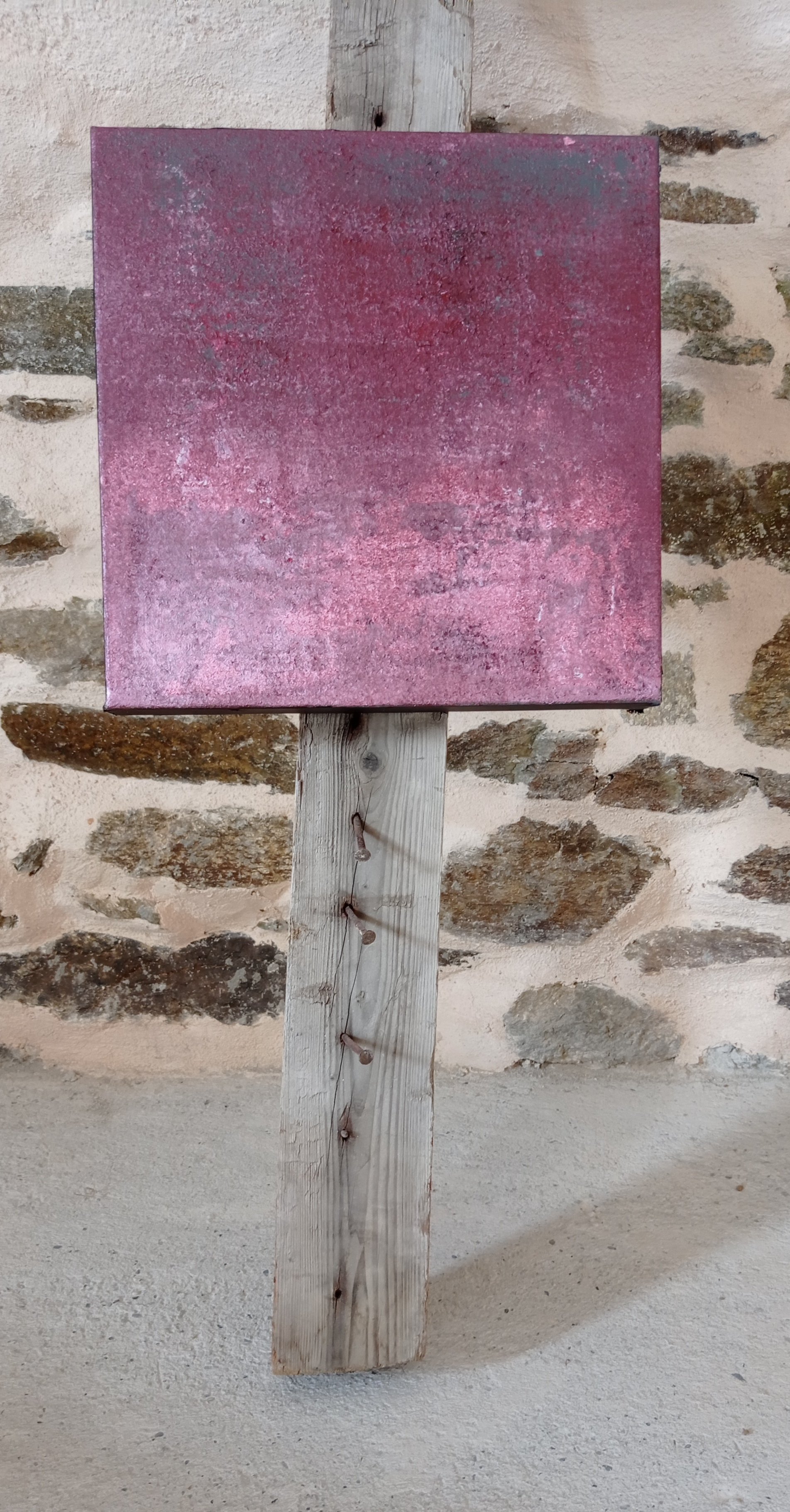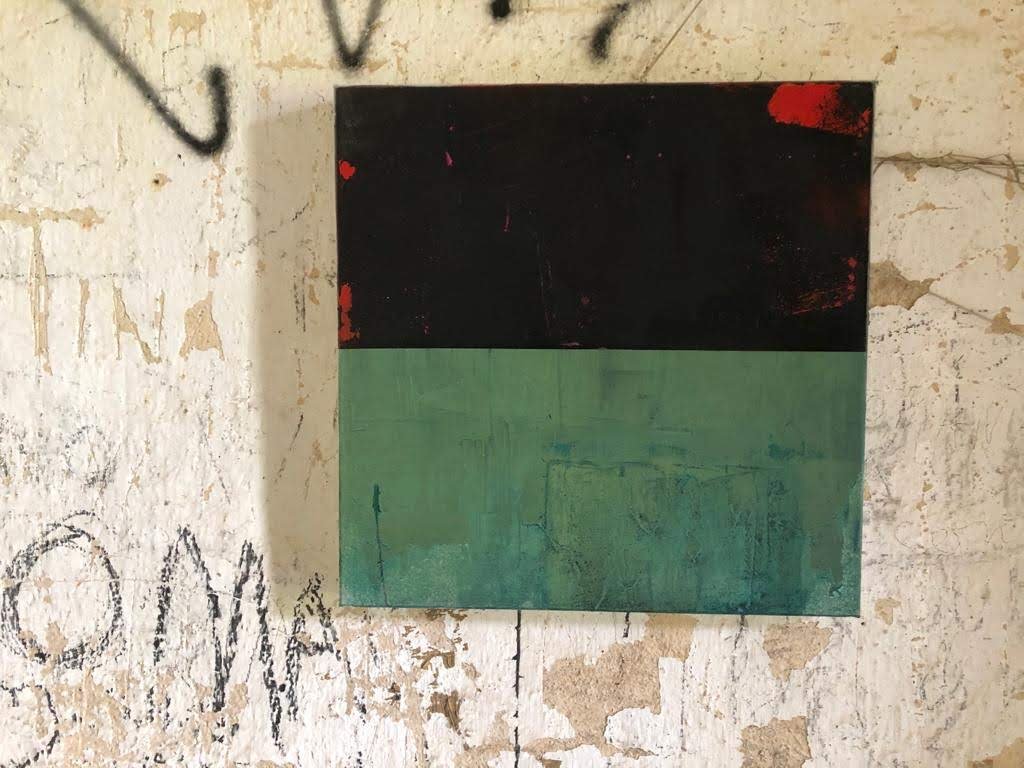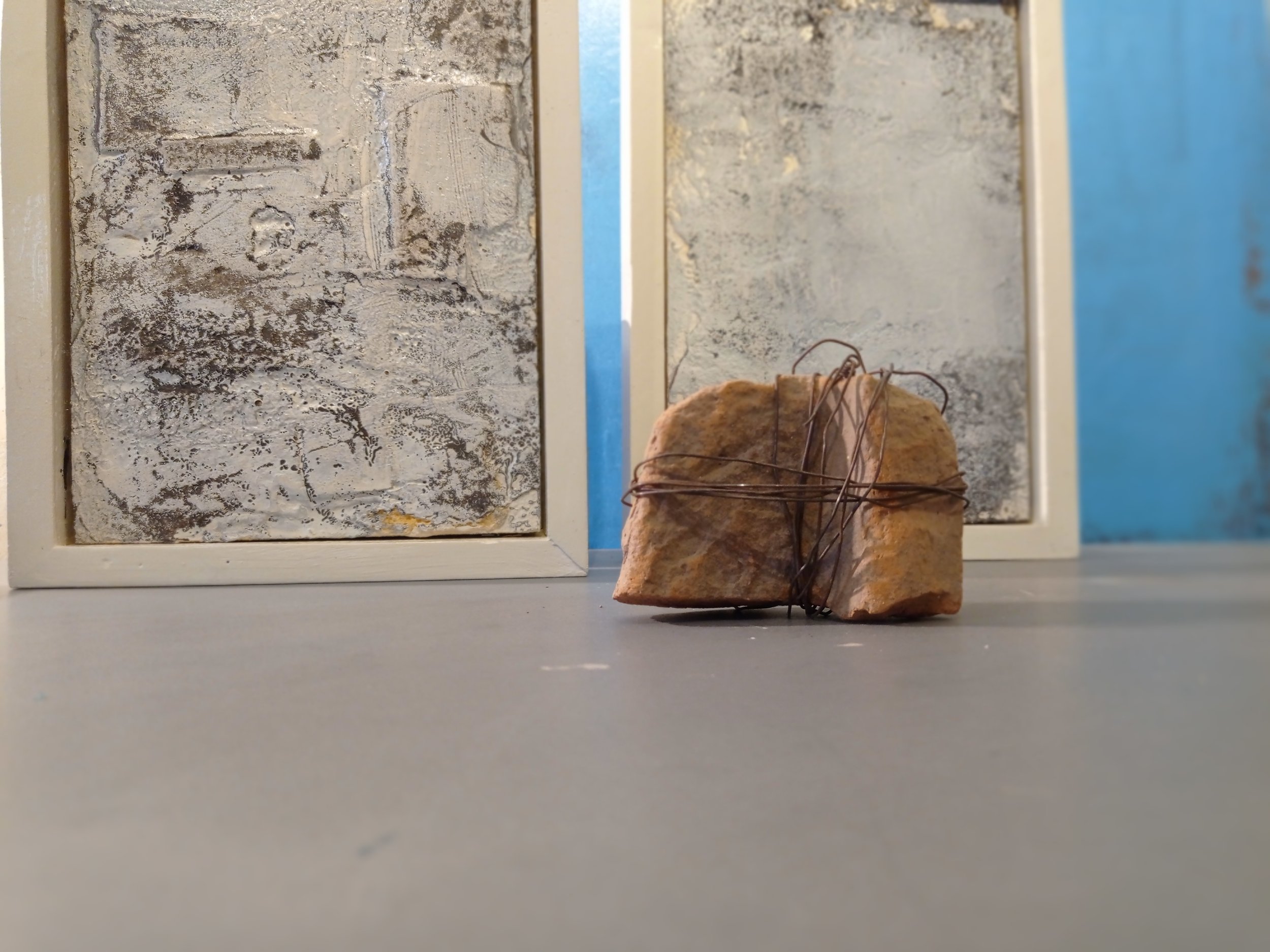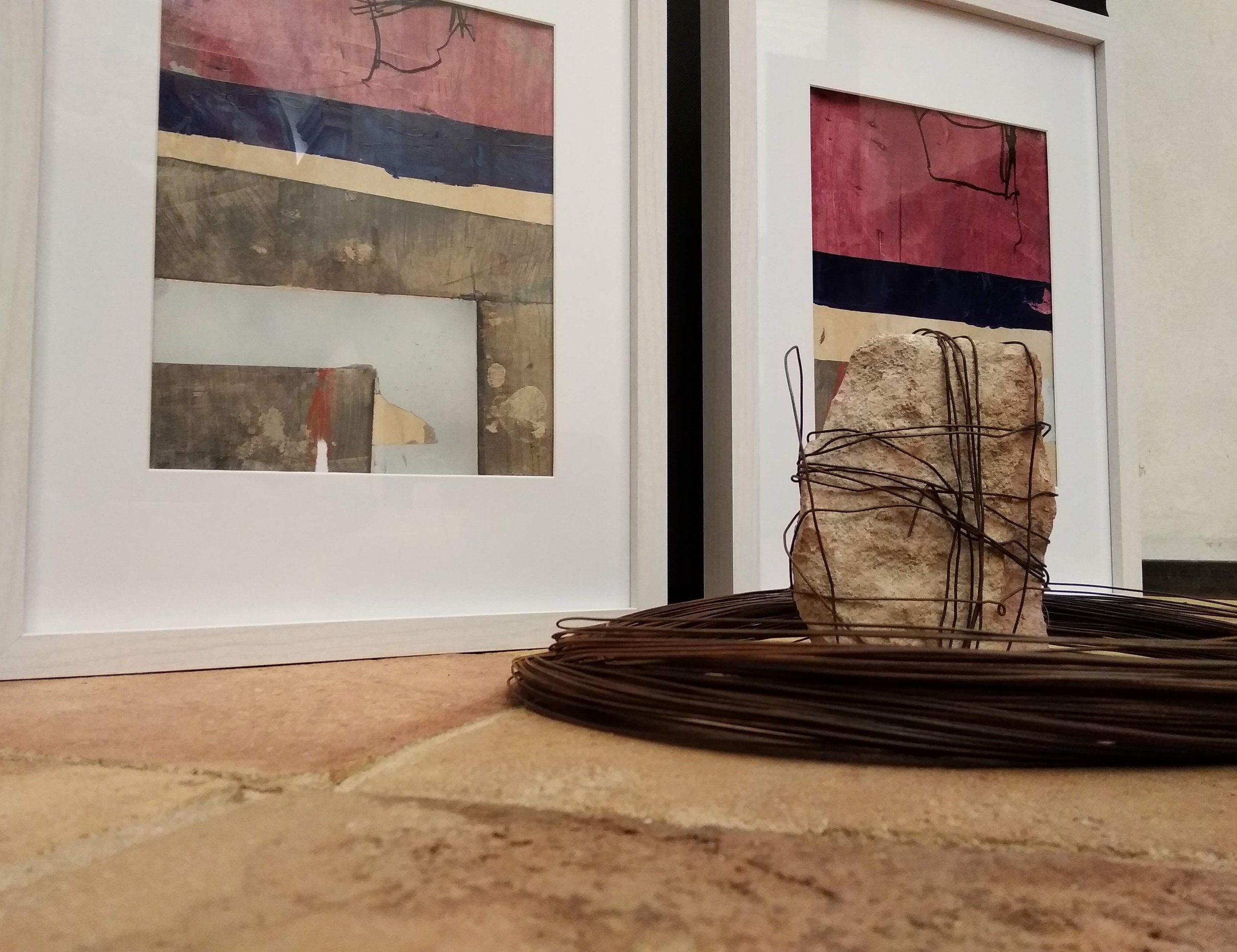Interview
Andrés Avré
Andrés Avré, born in Turin, is a prolific and energetic self-taught painter, with a growing profile of solo and group exhibitions.
Initially, he began to express himself through the languages of comics and illustrations. After an interlude dedicated to the audiovisual, Andrés returned to informal painting; an environment in which he feels truly and authentically free.
His cultural background and his interests, which include theater, history and archeology, are reflected in his work.
Andrés’ work has American abstract expressionism as its main cultural reference. His painting, in its restlessness to interrogate space in an infinite way, represents a rich and personal version of the European informal.
His poetics recover primordial values, microcosms of earth, and matter just out of chaos. At the same time, it comprises superimposed palimpsests on which man and nature leave their traces.
What is your background and how did you start your journey in the art world?
“I was born in Turin in 1966. I began to approach the informal after university studies, alternating my interests in audiovisuals, comics and illustration with painting. But only in maturity did I become fully aware of being an artist, which led me to consider art as the outlet of my most intimate energies and impulses.
The magic of the ancient village of Monforte d'Alba in the Langhe, Italy, where I went by chance, did the rest. The belvedere, overlooking the hills that stretch to the sea, casts our gaze on a landscape that is unique in the world. It is in constant change: the green that gives way to the yellow, reds and browns of autumn in the Langa.
I was 50 when this happened. It was impossible to exist in the wonder of that continuous transformation. I felt at home. It was then that I decided I would look for my own place to create and exhibit in Monforte.”
“I draw inspiration from ancient walls, natural elements and my dreams. Nature, life, death, things that I find everywhere are interesting food for thought. Old walls and peeling surfaces. The layers and the decomposition process of objects fascinate me.”
What inspires you most?
“I have always been fascinated by the transformation of matter, but also of all that is alive; of people and the feelings between them. The accumulation and the becoming that creates, modifies and stratifies matter and every vital experience, are fundamental themes of my poetics. They have also become my modus operandi, my expressive style. Some of my works reach the end of the creative process only after alternating phases of rest and elaboration. They go through multiple processes: polishing, stain removal, coating and washing, sealing and scratching.
I use multiple sources of inspiration, which derive from my interest in the relationship between ancient and contemporary, between history, archeology and science. These are passions that feed my work and continue to support my practice.”
What themes do you pursue? Is there an underlying message in your work?
“I have been working for years on the theme of transformation as a metaphor for human existence, and a reflection of the meanders of my thoughts. The transformation of matter and feelings is never just an intellectual game, or a cruel test to which we are all subjected. It is a real drive that informs all my production, becoming an obsession, an unmistakable figure, never without charm.
Basically, I try to give life to an archetype, that of the instability of everything around us. Of the incessant changing of things— people and feelings— in a continuous evolution that creates new realities. These are often more fascinating than the previous ones. After all, we must consider transformation a biological form that unites everyone; a process that we carry within us, that belongs to us, and from which we will never be able to free ourselves completely because it is part of our existence. It is therefore not just a traumatic or degenerative experience, but rather a change, a superfetation, a re-appropriation of what was hidden or what was latent.”
How would you describe your work?
“In my intentions, there is the hidden will to re-contact the most intimate part of man. The one that allows him to exercise curiosity and mental openness to minimal perception, free from prejudice, full of possibilities, eager to know. I investigate the opportunities offered by technology and its numerous manifestations to activate man's imagination. It allows him to find unstable primordial harmonies, to lead him beyond appearances on a relational path that is a metaphor for continuous and tireless research. I try to animate the pictorial space in a universe suspended between freedom and division, density and lightness. Each of my works celebrates the harmony of spaces and the aesthetics of imperfection.”
Which artists influence you most?
“I certainly feel a great affinity with the artists of American abstract expressionism. These include Newman, Still and Kline. I have great admiration for the work of Kounellis. Among the living artists, models of reference are Serra, Richter and Kiefer.”
What is your creative process like?
"I always look for settings that are particularly studied for my works. Highly evocative places, abandoned buildings or areas sedimented by history. Hence, one of the main aspects of my poetics: the combination of ancient and contemporary. The dialogue between works of art, history and culture.
I form light and peeling patinas on the canvases, like the walls of the Langa villages. I use the colors of the earth, of the nature of these places, and atmospheres that I find in Cesare Pavese's poems.”
What is an artist’s role in society and how do you see that evolving?
“On each of my works, I first prepare a black layer which I then let slowly dry. Then I work the material with old mason's trowels to create a light structure. The work initially appears as a shapeless body of very fluid masses, which correspond to a sort of primitive draft. I don't like excessive material effects or the dripping technique, so I tend to create a sort of harmonious ‘mixture’. I work the surface of the canvas with spatulas, rollers and sponges until I dissolve the tension. Mine is always a search for harmony and balance between form, content and colors.”
Have you had any noteworthy exhibitions you'd like to share?
“Yes, you can read about, and see my work here.”


